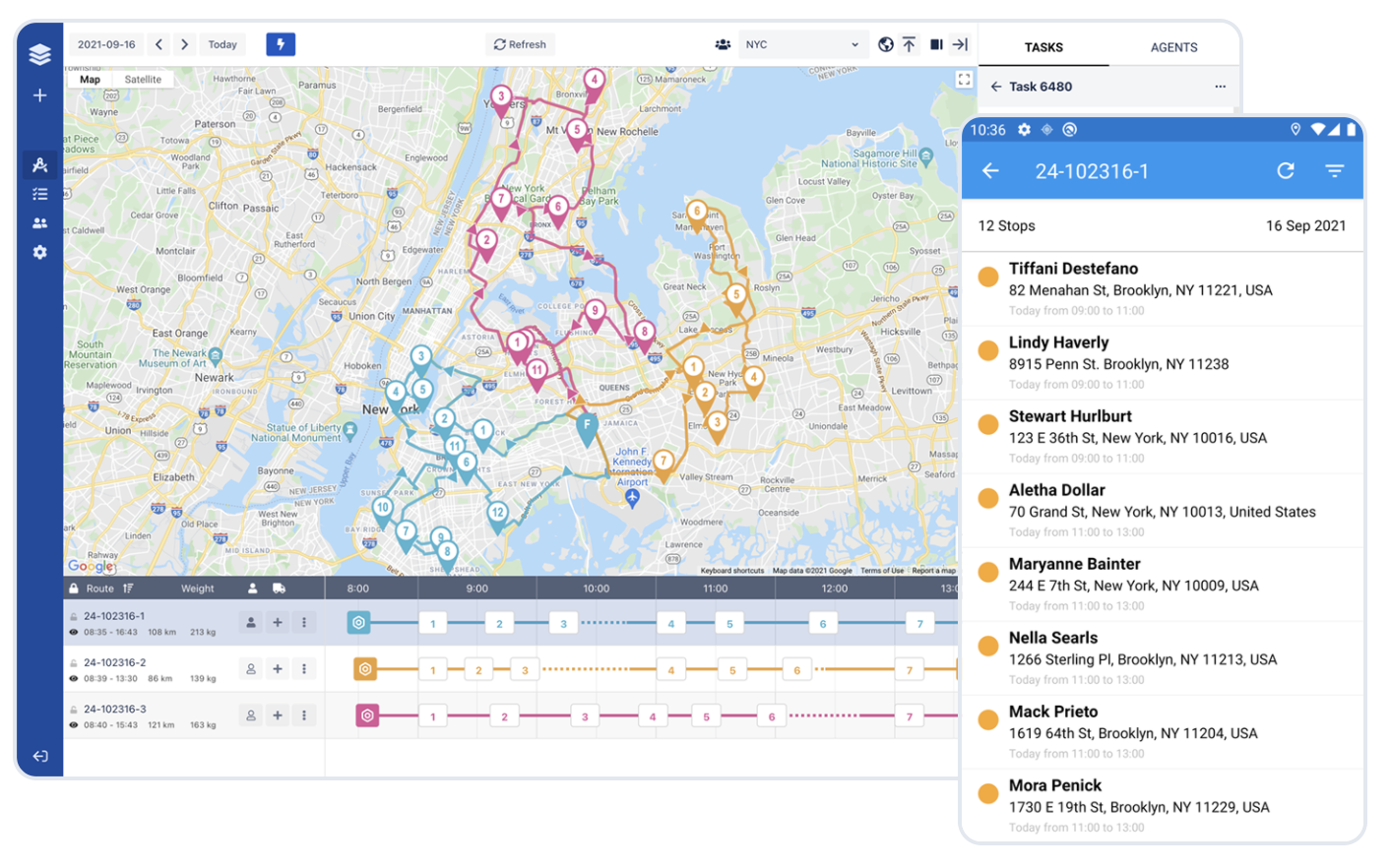Choosing between in-house and third-party delivery is a difficult choice. To choose wisely, it’s crucial to evaluate your business needs, resources, and goals.

For each e-commerce business, delivery management is an essential part of its core operations.
There are two options when it comes to managing deliveries. You can choose between doing it in-house or outsourcing to a third-party courier service.
Each option has its pros and cons. To help you decide which one is right for you, let’s look at each one of them.
Pros and Cons of In-House Delivery
Doing your deliveries in-house means relying on your own employees and fleets to transport packages to customers. In a nutshell, you get more control but you increase your workload.
Managing deliveries in-house is time-consuming. It requires a lot of effort to set up processes and manage the logistics.
You’ll also need to train your team or hire people with the right skills. This is neither easy nor cheap. In fact, skilled hires are one of the main factors for the high costs of last mile delivery.
The average cost for a driver is approximately 16$ per hour. But besides delivery drivers, you’ll most probably need customer service and warehouse staff too.
You will also deal with packaging, labeling, sorting, and delivery. If you don't have delivery fleets, you'll have to buy or lease them, which is an additional expense. Depending on delivery volumes, you might also need to invest in some kind of delivery app.
On the bright side, managing deliveries in-house provides greater control and flexibility. You can decide how you sort packages, and how and when you deliver them. You can also ensure that your delivery staff handles your packages with care. Ultimately, this will have a positive effect on customer experience.
In-house delivery can also be more cost-effective if you have a smaller volume of online orders. You’ll have to make an initial investment for setting up your delivery process but, in the long term, it will pay off.
Pros and Cons of Third-Party Delivery
Outsourcing deliveries to a third-party courier means hiring an external company to transport your packages to customers. This option allows you to avoid the heavy lifting of the delivery logistics. However, you’ll have less control over deliveries.
One of the advantages of third-party delivery is that it usually saves time and effort. You won't have to manage the process and your staff can focus on core business operations.
You can also benefit from the service provider's expertise and experience, which can help you improve your delivery processes.
Another advantage is that it allows you to scale. You can easily increase the number of deliveries without having to invest in additional equipment or personnel.
However, outsourcing to a third-party courier service has some downsides too.
One of them is the lack of control. You barely own the delivery process, which can make it difficult to maintain quality standards.
Unfortunately, courier service providers don’t care about your products and customers the way you do. This might result in damaged packages, customer complaints and damaged brand reputation.
Another disadvantage is that it can be expensive if you have a small number of deliveries.
Which option is better for you?
Choosing between managing deliveries in-house and outsourcing to a third-party courier service can be a difficult decision.
The following tips will help you make the right choice:
- Assess your delivery needs: Consider the volume, frequency, and type of deliveries you need to make.
- Evaluate your resources: Determine whether you have the right equipment, staff, and systems to manage deliveries in-house.
- Review your budget: Compare the costs of managing deliveries in-house and outsourcing to a third-party courier service.
- Consider customer experience: Think about how much control you want over the delivery process to maintain quality standards.
- Research service providers: Look for reliable and reputable courier service providers that can meet your delivery needs.
This comparison table might also help you make up your mind:
Bonus tips
No matter which option you pick, here are 5 additional tips for more efficient deliveries.
Invest in Technology:
If you choose to manage deliveries in-house, use some kind of delivery platform to optimize the process. Consider a delivery management software that will help with route planning, order tracking, and analytics.
Most solutions provide an admin portal and a mobile app for your drivers. This can help reduce errors, improve efficiency, and provide real-time updates to customers.
At Ufleet we can help you solve each one of these challenges. If you want to learn more, get in touch or watch the video below.
Maintain Good Relationships with Service Providers:
If you decide to outsource your deliveries, build strong relationships with your chosen courier service providers. Communicate clearly, provide necessary information in a timely manner, and collaborate to ensure a smooth and effective delivery process. Regularly evaluate the performance of your service providers and address any concerns promptly.
Establish Clear Delivery Policies:
Clearly define your delivery model and communicate it to your team and or courier partner. This includes details such as delivery timeframes, fees, and any specific requirements or restrictions. By setting clear expectations, you can minimize delivery issues.
Implement Quality Control Measures:
Whether you manage deliveries in-house or outsource them, it is essential to have quality control measures in place. Conduct regular inspections of packaging, labeling, and documentation to ensure that everything meets your standards. This can help minimize errors and prevent potential delays or damages during delivery.
Monitor Performance:
Monitor and analyze your delivery performance. Track metrics such as delivery time, order accuracy, and customer feedback. This way, you can identify areas for improvement and take proactive steps to address any issues.
Key takeaways
In-house and outsourced delivery have their own set of pros and cons. It’s crucial to evaluate your business needs, resources, and goals to make the right decision for your organization.
Consider factors such as control, cost-efficiency, and customer experience when making your choice.
With an efficient delivery process, you can enhance customer experience, increase satisfaction, and ultimately drive success for your business.
If you enjoyed this article, subscribe below and you’ll get more like this each month. ❤️✉️
Never miss a post
You may also like…
You too can reduce costs and improve efficiency with Ufleet
- plan and optimize delivery routes
- manage and empower drivers
- enhance customer experience
- make data-driven business decisions
We’d love to learn about your challenges.
Leave your email and we’ll get back to you.



